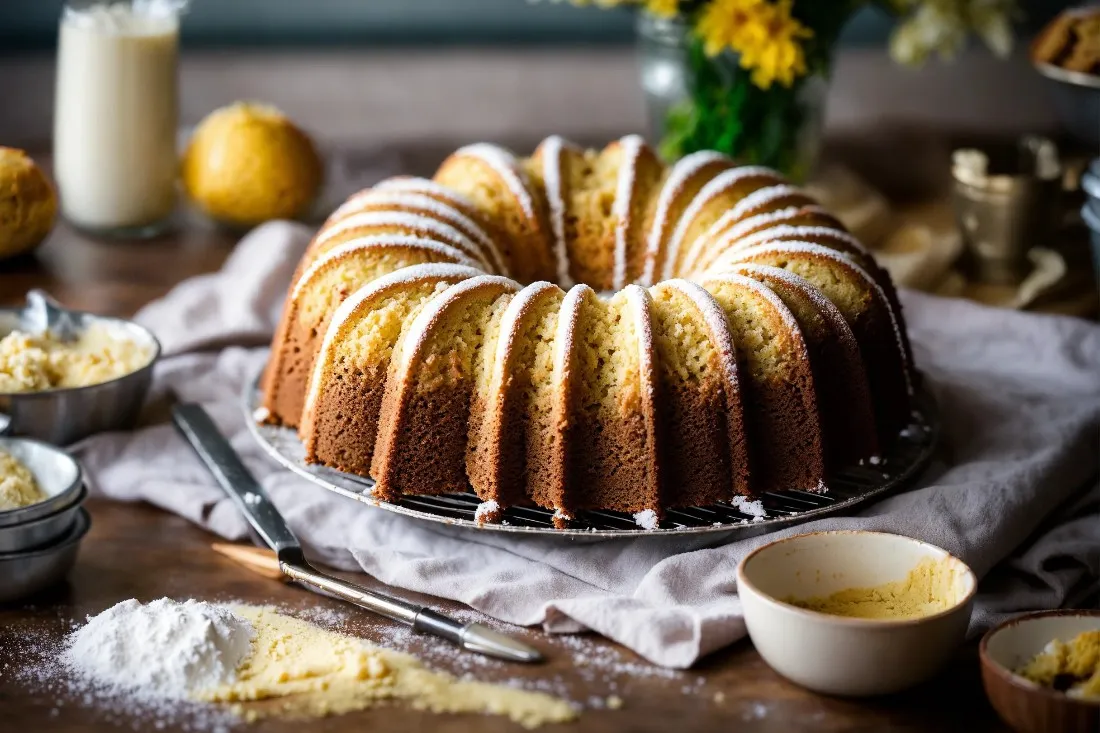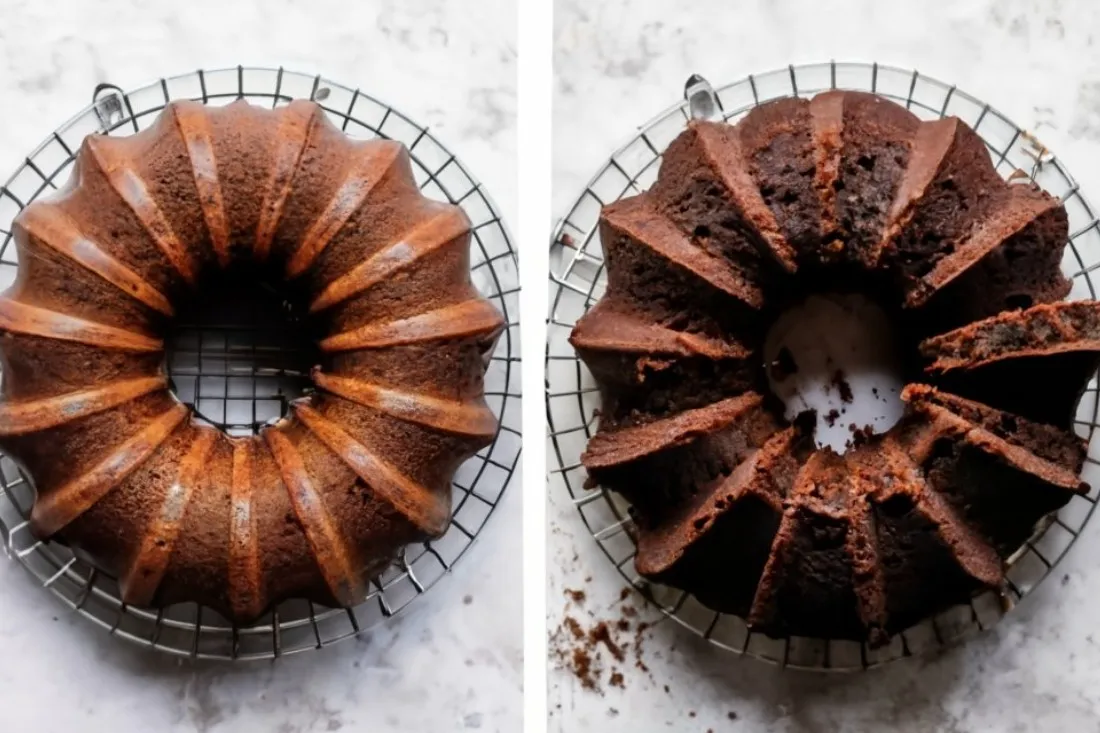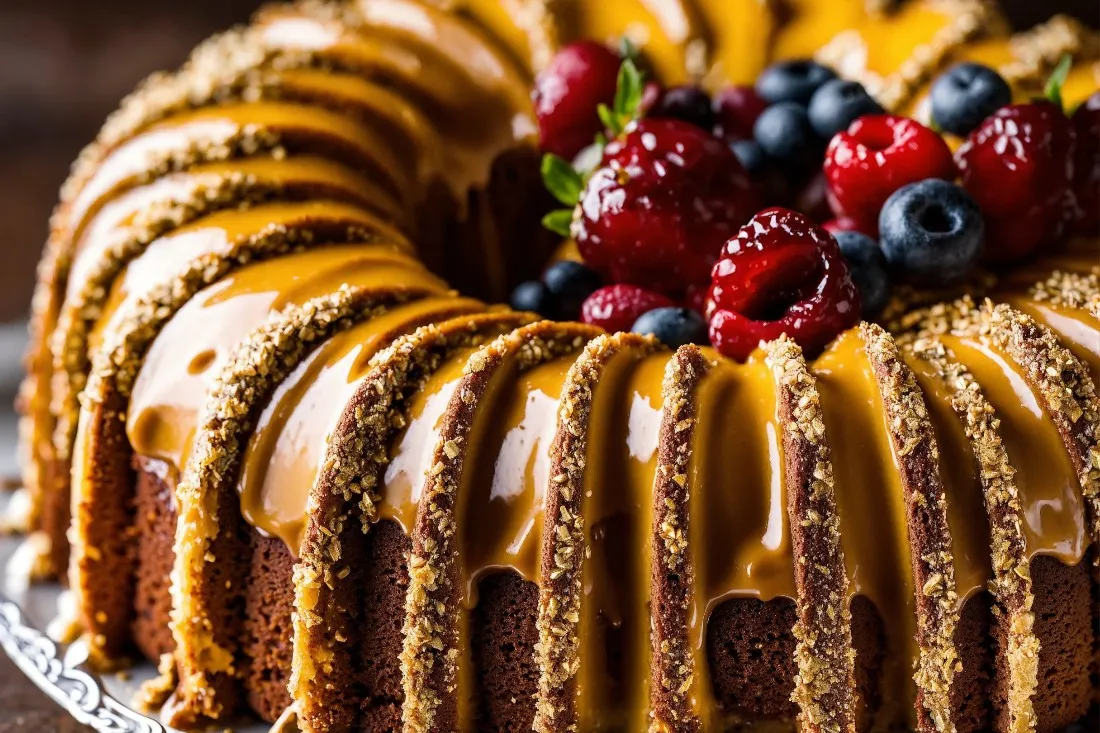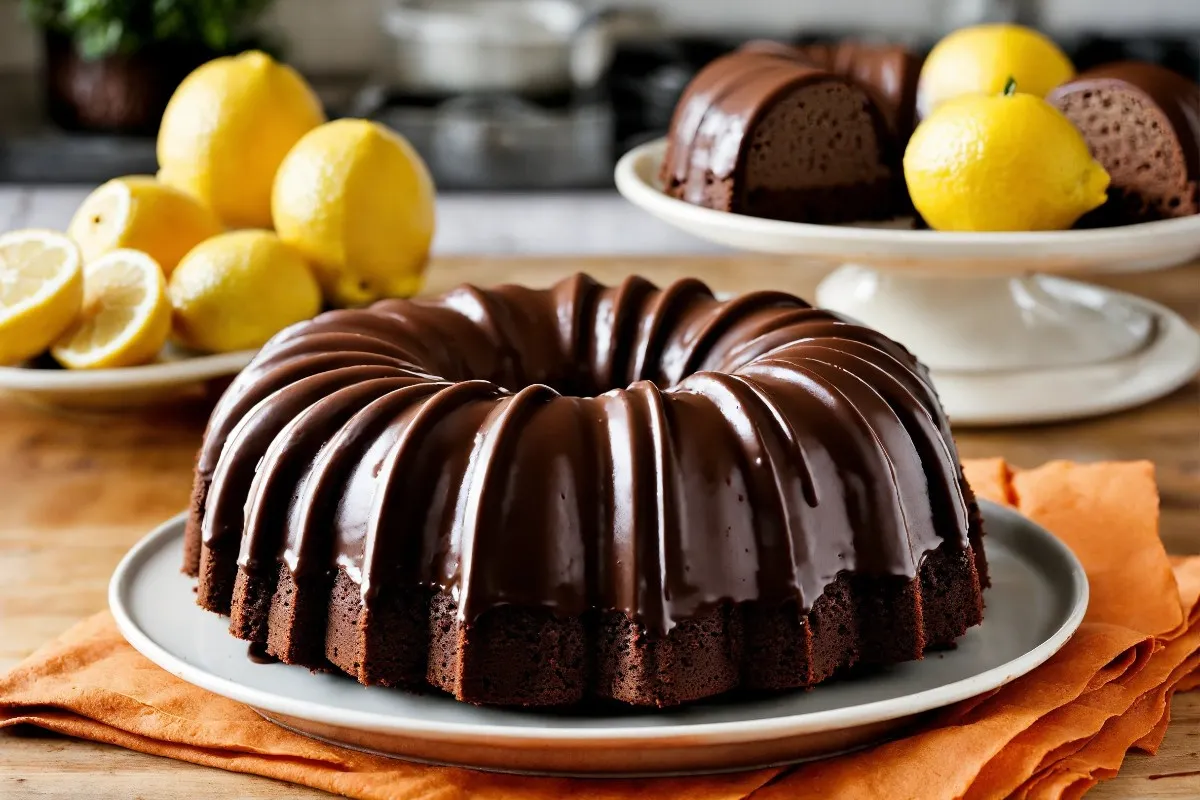In the world of baking, the Bundt pan stands out as a unique and versatile tool, capable of transforming ordinary cake recipes into stunning, sculptural desserts. But the question lingers in the minds of many bakers, both novice and experienced: Can you put any type of cake in a Bundt pan? This article delves into the intricacies of using Bundt pans for various cake recipes, offering insights and guidelines to ensure your baking adventures are both successful and delightful. From selecting the right cake type to mastering the art of conversion and troubleshooting, we’ll explore the dos and don’ts of Bundt cake baking.
Understanding Bundt Pans
History and Popularity of Bundt Pans
The Bundt pan, with its distinctive ring shape and fluted design, has a rich history that dates back to mid-20th century America. Its popularity soared when a certain Tunnel of Fudge cake, baked in a Bundt pan, won second place in a national baking contest. Since then, the Bundt pan has become a beloved staple in kitchens worldwide, celebrated for its ability to turn simple cake batters into works of art.
Different Types of Bundt Pans
Bundt pans come in a myriad of designs, from classic flutes to intricate patterns, each adding a unique touch to the cakes. Material-wise, they range from aluminum and non-stick coated metals to silicone. Each material has its pros and cons, affecting the cake’s cooking time and texture. It’s crucial to choose a pan that not only suits your aesthetic preferences but also works well with the type of cake you’re planning to bake.
In this journey through the world of Bundt cakes, we’ll uncover the secrets to using these pans effectively, ensuring that your cakes are not only visually appealing but also deliciously satisfying. Stay tuned as we dive deeper into the types of cakes best suited for Bundt pans in the next part of our series.
Selecting the Right Cake for Your Bundt Pan

Layer Cakes, Pound Cakes, and Sheet Cakes
When it comes to choosing the right type of cake for a Bundt pan, not all recipes are created equal. Layer cakes, pound cakes, and sheet cakes are your best bets. These cakes typically have a denser crumb and sturdier structure, making them ideal for the unique shape of Bundt pans. A classic pound cake, with its rich and buttery flavor, adapts beautifully to the intricate designs of Bundt pans, while layer cakes offer a versatile base for a variety of flavors and textures.
Cakes to Avoid: Chiffon and Whipped Egg White-Based Cakes
However, it’s not all smooth sailing. Certain cakes, like chiffon or those based on whipped egg whites, are less suitable for Bundt pans. These lighter, airier cakes might struggle to maintain their structure in the deep, contoured cavities of a Bundt pan. The delicate nature of these batters means they can become compressed or unevenly cooked, losing the very qualities that make them special.
Converting Regular Cake Recipes for Bundt Pans
Recipe Conversion Guidelines
Transforming a standard cake recipe into a Bundt masterpiece isn’t just about pouring batter into a different pan. It requires thoughtful adjustments and a bit of baking savvy. Here’s how to ensure your cake not only fits the pan but also turns out perfectly every time.
Reviewing and Adjusting Cake Recipes
Start by reviewing your chosen recipe. If it’s meant for a 13×9-inch pan or two 8- or 9-inch round pans, you’re in luck – these quantities are ideal for a standard Bundt pan. However, if the recipe is for a single square or loaf pan, you’ll likely need to double it to accommodate the larger volume of a Bundt pan.
Tips for Greasing and Flouring Bundt Pans
Greasing and flouring your Bundt pan is crucial. For best results, use shortening or butter, making sure to get into every nook and cranny. Then, lightly dust with flour to create a non-stick layer that will help your cake release seamlessly.
Filling the Pan Appropriately
When filling your Bundt pan, aim for two-thirds to three-quarters full. Overfilling can lead to messy overflows, while underfilling might result in a disappointing shortcake. It’s all about finding that sweet spot.
Adjusting Baking Times and Temperatures
Bundt cakes generally require longer baking times due to their thickness. Keep the oven temperature the same, but be prepared to extend the baking time. Start checking for doneness a bit earlier than the recipe suggests, using a skewer or toothpick.
Troubleshooting Common Bundt Cake Issues

Overcoming Bundt Cake Challenges
Even the most experienced bakers can face hurdles when baking Bundt cakes. Let’s address some common issues and how to solve them, ensuring your Bundt cakes are as close to perfection as possible.
Preventing Cakes from Sticking
One of the biggest challenges with Bundt cakes is ensuring they come out of the pan cleanly. To prevent sticking, make sure your pan is properly greased and floured. Additionally, consider using a baking spray that contains flour for an extra layer of protection. Remember, timing is key – let the cake cool in the pan for about 10 minutes before attempting to turn it out. This allows the cake to be set and reduces the risk of breaking.
Ensuring Even Baking and Browning
Uneven baking can result in parts of the cake being over or undercooked. To avoid this, rotate your pan halfway through the baking time. This helps to ensure even heat distribution. If you notice the cake browning too quickly, you can loosely cover the top with aluminum foil to prevent over-browning while the inside continues to bake.
Exploring Bundt Cake Varieties
Classic and Innovative Bundt Cake Recipes
Bundt cakes are a canvas for creativity, offering endless possibilities for flavors and ingredients. Classic recipes like the rich, buttery pound cake or the moist, chocolatey devil’s food cake are always crowd-pleasers. But don’t stop there – innovate by incorporating fruits, nuts, or even savory elements like herbs and spices. Imagine a lemon-thyme Bundt cake or a chocolate-cherry concoction, each bringing a unique twist to the table.
Decorating and Presenting Bundt Cakes
The beauty of a Bundt cake lies in its distinctive shape, which means decoration can be minimal yet impactful. A simple glaze or dusting of powdered sugar can highlight the intricate design of the pan. For a more festive look, drizzle with a contrasting icing, sprinkle with edible flowers, or adorn with fresh berries. When presenting your Bundt cake, choose a plate or stand that complements its elegance. Remember, the first impression is visual, so make it count!
Advanced Techniques and Variations for Bundt Cakes

Exploring New Dimensions in Bundt Baking
Once you’ve mastered the basics of Bundt cake baking, it’s time to elevate your skills with advanced techniques and creative variations. This part of the series will introduce you to new methods and ideas that can transform your Bundt cakes into extraordinary culinary creations.
Incorporating Fillings and Layers
One way to add an element of surprise to your Bundt cakes is by incorporating fillings. Imagine cutting into a lemon Bundt cake to find a hidden core of blueberry compote or a chocolate Bundt with a creamy caramel center. Techniques like the ‘tunnel of fudge’ or using a piping bag to insert fillings after baking can add an exciting twist to your cakes.
Experimenting with Flavors and Ingredients
The versatility of Bundt cakes means you can experiment with a wide range of flavors and ingredients. Consider using spices like cardamom or cinnamon for a warm, aromatic flavor, or infuse your cakes with citrus zests for a refreshing twist. Incorporating ingredients like nuts, dried fruits, or even vegetables like carrots or zucchini can add texture and depth to your cakes.
Advanced Decorating Techniques
While Bundt cakes inherently have a decorative look, you can enhance their appearance with advanced decorating techniques. Drizzling with multi-colored glazes, using edible gold leaf, or creating chocolate ganache drippings can turn your Bundt cake into a show-stopping centerpiece.
Pairing with Complementary Elements
Finally, consider how you can pair your Bundt cake with other elements to create a complete dessert experience. Serving a slice of spiced Bundt cake with a dollop of whipped cream, or pairing a chocolate Bundt with a scoop of vanilla ice cream, can elevate the overall taste and presentation.
In this part, we’ve explored ways to push the boundaries of Bundt cake baking. By incorporating these advanced techniques and creative variations, you can continue to surprise and delight your friends, family, and guests with your baking prowess.
Embracing Seasonal and Special Occasion Bundt Cakes
Tailoring Bundt Cakes to Seasons and Celebrations
Bundt cakes are not just versatile in terms of flavors and ingredients; they also offer a wonderful canvas to reflect the spirit of different seasons and special occasions. This part of the series will inspire you to create Bundt cakes that are not only delicious but also resonate with the essence of various celebrations and times of the year.
Seasonal Flavors and Ingredients
Each season brings its unique produce and flavors, which can be beautifully incorporated into Bundt cakes. For instance, a pumpkin spice Bundt cake can capture the essence of fall, while a berry-laden Bundt might be perfect for summer. Utilize seasonal fruits, spices, and flavors to make your Bundt cakes timely and tantalizing.
Themed Decorations for Holidays and Events
Bundt cakes can be easily dressed up for holidays and special events. Think of a red velvet Bundt cake for Valentine’s Day, a peppermint-chocolate Bundt for Christmas, or a pastel-colored lemon Bundt for Easter. Use themed decorations, such as colored glazes, sprinkles, and edible decorations, to align your cake with the holiday or occasion.
Creating Bundt Cakes for Special Diets
In today’s diverse culinary landscape, accommodating various dietary preferences and restrictions is important. Explore recipes for gluten-free, vegan, or low-sugar Bundt cakes. This inclusivity ensures that everyone can enjoy a slice, regardless of their dietary needs.
Bundt Cakes as Gifts and Centerpieces
Lastly, Bundt cakes make excellent gifts and centerpieces for gatherings. Their impressive appearance and the ability to stay moist longer make them ideal for gifting. Wrap them beautifully or present them on elegant cake stands to make a memorable impression.
Answering Common Questions
FAQs Based on ‘People Also Ask’
In this section, we address some frequently asked questions about Bundt cakes, providing clarity and guidance to enhance your baking experience.
- Can I use a regular cake mix in a Bundt pan?
- Absolutely! Most standard cake mixes are suitable for Bundt pans. Just be sure to follow the tips on adjusting the recipe and baking time as discussed earlier.
- How do I know when my Bundt cake is fully baked?
- The best way is to use the skewer test. Insert a skewer into the thickest part of the cake. If it comes out clean or with a few crumbs, the cake is done. If there’s wet batter, it needs more time.
- Why did my Bundt cake come out dry?
- This could be due to overbaking or not enough moisture in the batter. Make sure to measure ingredients accurately and avoid overbaking by regularly checking for doneness towards the end of the baking time.
- Can I convert any cake recipe into a Bundt cake?
- While many recipes can be adapted, some, like very light, airy cakes, might not work well in a Bundt pan due to their delicate structure.
- How long should I cool my Bundt cake before inverting it?
- Let it cool in the pan for about 10 minutes. This allows the cake to set and reduces the likelihood of it breaking when you invert it.
Perfecting the Art of Bundt Cake Baking
Summary of Key Points
As we conclude our journey through the world of Bundt cake baking, let’s recap the essential tips and tricks that will help you master this delightful baking challenge:
- Selecting the Right Cake: Opt for denser cakes like pound or layer cakes for best results in a Bundt pan. Avoid very light or delicate batters like chiffon.
- Recipe Conversion: Adjust your recipe for the volume of the Bundt pan, and don’t forget to modify baking times accordingly.
- Preventing Sticking: Properly greasing and flouring your Bundt pan is crucial for a clean release of the cake.
- Even Baking: Rotate the pan during baking and monitor for even browning to ensure a perfectly baked Bundt cake.
- Decorating: Embrace the simplicity of Bundt cake decoration, using glazes or powdered sugar to enhance its natural beauty.
Further Reading and Resources
For those eager to dive deeper into the art of Bundt baking, explore additional resources and recipes. Websites like Sugar Spun Run offer a wealth of information and inspiration for perfecting your Bundt cake recipes. Additionally, don’t hesitate to experiment with flavors and decorations to make each Bundt cake uniquely yours.
Bundt cakes are more than just a dessert; they’re a statement piece that combines culinary skill with artistic expression. Whether you’re a seasoned baker or just starting, the world of Bundt cakes offers endless possibilities to delight and impress. Happy baking!

